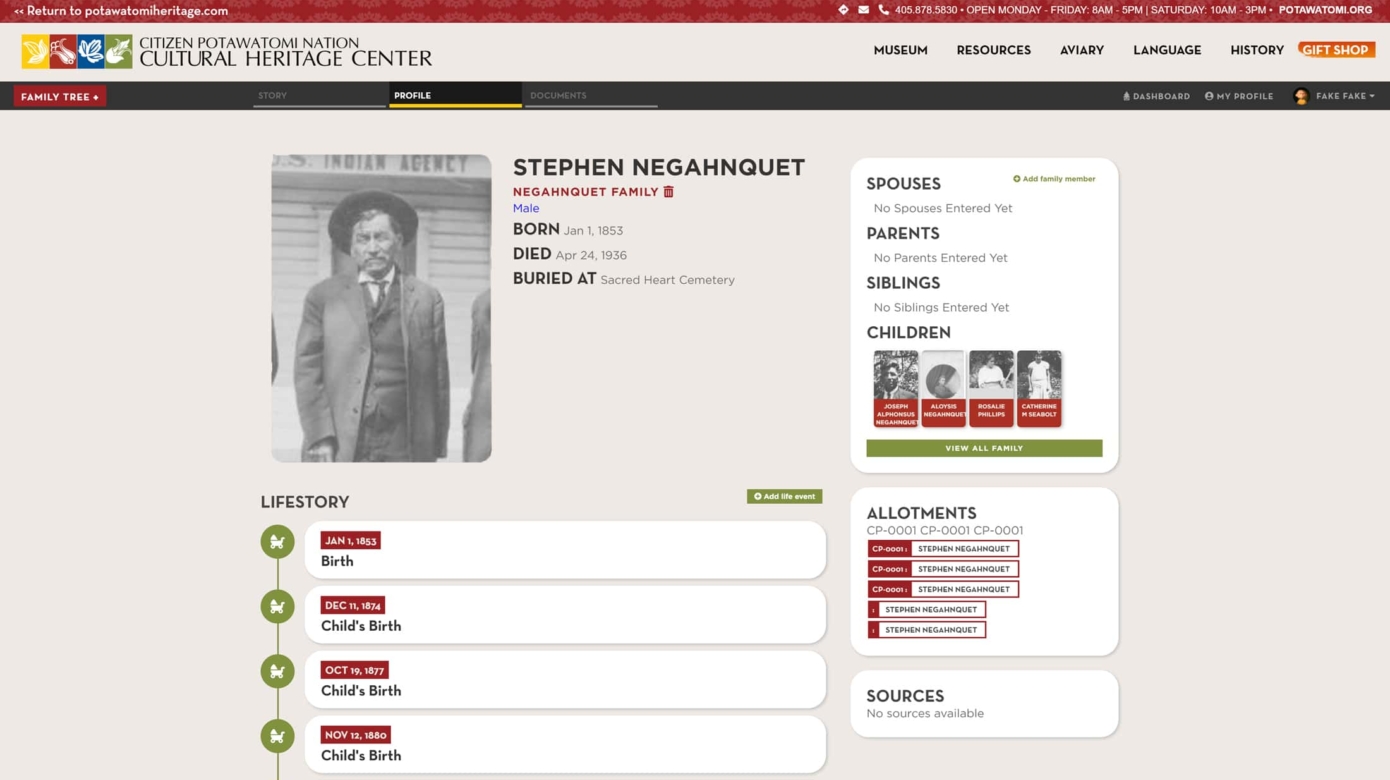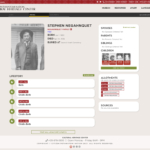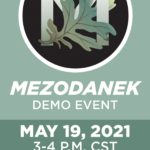The Citizen Potawatomi Nation’s Cultural Heritage Center exists to protect CPN history and educate Tribal members and the public. Its revamped website, potawatomiheritage.com, features six state-of-the-art components that help connect Citizen Potawatomi to their heritage, including an online encyclopedia, family manuscripts, archives, allotments, veterans and Mezodanek — a genealogical research platform. These resources honor those who came before, highlight CPN servicemen and servicewomen, and build inner-Tribal community.
“Our main mission is to make the resources that we have here at the Cultural Heritage Center available to all Tribal members,” said Dr. Kelli Mosteller, Citizen Potawatomi Nation Cultural Heritage Center director.
Process
Creating the new CHC website features required imagination, teamwork and dedication over a five-year timespan. CHC staff, Dr. Mosteller and CHC Curator Blake Norton worked closely with CPN Information Technology Department software developer Jonathan Cervone and web developer Nathan Hawkins.
“It’s taken a lot of conversations between us all saying, ‘We think this is possible, but is it possible?’ and it turns out that yes, with enough hard work and time spent working out the bugs, it really is,” Dr. Mosteller said.
The project has also provided educational opportunities, enlightening CHC staff on important Potawatomi who may or may not receive the recognition they deserve.
“It’s still surprising to me to be able to learn new things about the families and how many of them are so intertwined … hopefully, we’ll be able to shed light on all of them now,” Norton said.
While in the development stages, staff realized some key historical information was missing and set out to find external resources to help.
“We wrote a grant, and we have gotten copies of the Individual Indian Files Collection from the Oklahoma History Center,” Dr. Mosteller said. “It’s only helpful up to a point if there are all these holes and gaps, so we had to do a lot of legwork and move all those pieces around to get everything to line up.”
With a sound structure now in place, the CHC looks forward to the opportunity to offer its resources to CPN members through the website and expand its archives for generations to come.
Encyclopedia
The CHC’s encyclopedia features entries on key people, places, events, objects and culture tied to the Citizen Potawatomi people.
“The encyclopedia is growing, and we will continue to grow it as time goes on and staff complete drafts on a variety of topics, people and more,” Dr. Mosteller said.
Website visitors can browse alphabetically, use the search bar to look up specific pages or click on 26 different subjects.
“It’s an excellent resource that is already getting a lot of visits and uses as well as positive feedback,” she said.
Family manuscripts
Conducting Citizen Potawatomi family history is easy through the Family Manuscripts Collection. Users can search by founding families and individuals to uncover documents, genealogical records, photos and more. It features more than 300 years of Potawatomi culture and history that CPN members have donated.
“Let’s say you’re looking for information on someone you descend from, so you search within the Family Manuscripts Collection for information on him. If (the CHC) has an article about him, a portrait and maybe a family record highlighting when he married, we would have all of those individual files under his file,” Dr. Mosteller said.
The CHC eventually plans to incorporate the 30,000-plus records housed within the Family Manuscripts Collection into its new platform Mezodanek. But for now, website visitors can still utilize the online database for research.
Mezodanek
Translated as “family” in English, Mezodanek offers CPN members a digital space to build family trees and connect with fellow Tribal members. While it operates much like other online genealogical websites, CHC staff have built family tree foundational structures and oversee community input for accuracy.
“We have dedicated individuals that are researching each family and being able to verify who is connected to who based upon government records, family manuscripts, Tribal enrollment, vitals and more,” Norton explained. “So we have a lot of angles that we’re playing here to verify this information.”
Mezodanek is available to CPN members and spouses. To access and add profile information, users must provide a CPN Tribal ID card to receive a login.
“Members will be able to build a family tree, just like you would on other genealogical sites, connecting respective ancestors because it’s their own, unique profile,” Norton said.
CHC staff have formed foundational trees for every Citizen Potawatomi family to assist Tribal members with their genealogical research.
“Beginning with ancestors on the 1872 and 1887 censuses, and then going back to their common Potawatomi ancestor, all of that research and lineage has been created, and for some families, it goes further,” Norton said. “In some instances where a Métis family married into another Métis family, we can trace back to their common Potawatomi ancestor as well. Some of these trees are going back to the 1700s.”
Although not included in the May 1 launch, the CHC hopes to add sharing features in the future for users to be able to send their research directly to others and connect with distant family members.
“You will be able to either share it with specific email addresses, share with a specific user or make it public where the entire family can see it,” Hawkins said. “So if somebody else in your family has built out this elaborate tree, then it could show up on another family member’s profile that’s connected.”
While the platform helps preserve current and recent history for later access, to protect Tribal members, their identities, and for confidentiality reasons, research-based information will only be available on those who have passed away more than 25 years ago.
“A lot of effort has gone into creating public information policies to keep member information safe and secure,” Norton explained. “We’re very careful about that.”
Users are able to include current and recent family in their trees. Specific CPN-housed documents, such as governmental papers and more, will not be available for online research purposes until 25 years later.
“But if you build your own family tree and add records, you will not be limited,” Hawkins explained. “You’ll be able to build out your tree and profile however you want.”
Mezodanek also provides an opportunity for CHC staff to connect with Tribal members and expand its archives and collections.
“It will allow us to open avenues of discussion regarding what types of research our users have conducted and possible records they have acquired. From there, we can determine if they would be interested in donating that information to the CHC and sharing it with the community,” Norton said.
Those willing to share pieces of family history and/or modern information, CHC staff are happy to help. Call 405-878-5830 to begin the process.
“People don’t often think of themselves as future ancestors, but a lot of people today are going to be somebody’s great-great-grandfather or great-great-grandmother one day, and they’re going to think that they are just as interesting as we think our great-great-grandparents were,” Dr. Mosteller said. “I think people sometimes have a hard time seeing themselves in that role, but that’s how history gets lost is when you don’t see the value of preserving what you have today.”
Archives
One of the best ways to begin learning about Potawatomi history is through the online archives, which includes cultural artifacts, art, photographs, historical records and manuscripts. Website visitors can access the archives from the “resource” tab and use the search function to look up information on specific individuals, families and more.
The archives are also accessible via the Mezodanek platform to assist with research and building geological records.
Allotments
The Citizen Potawatomi received allotments within the 900-square-mile Indian Territory reservation, which is present-day Oklahoma, in 1872 and 1887. The CHC’s website features a searchable, interactive map that shows each Citizen Potawatomi allotment and cemetery within the original reservation boundaries. Citizen Potawatomi were able to choose their plots of land, and each person’s age and status determined the number of acres they received: 160 acres for heads of households, 80 for unwed adults and 40 for those under 18. CHC staff are also researching each cemetery to list burial information for Tribal citizens.
“It’s a great resource and provides a visual reference for those who are interested in learning where their family’s allotments and burial plots were or are today,” Dr. Mosteller said.
The map also features a QR code and Google Maps location for each allotment, helping website visitors and CPN members gain a greater understanding.
Veterans
“It’s important to honor the sacrifices of those who have done a lot — in some cases, given everything — for us,” Dr. Mosteller said. “Taking the time to honor those people who have fought for us, who have volunteered to take on this act of service, is a Potawatomi tradition. We’ve always honored our veterans and our braves and the people who have fought to defend us.”
The veteran portion of the website is an expansion of the CHC’s Wédasé gallery and memorial, and provides greater research capabilities by separating CPN veterans out by last name, family group, branch of service, campaigns and awards. It also includes interviews with veterans and more.
“It makes it a bit more user-friendly so people can select their filters — what they’re wanting to search for — and it also helps us on the back end. Say we wanted to highlight Tribal members that were awarded Purple Hearts or fought in the Pacific Theatre of World War II, we’d be able to key in that search criteria and get immediate results,” Norton said.
While other components of the new website limit access to CPN members and family only, the veterans’ platform is open to the public.
“It has an element of user-friendliness in that anybody can come and learn so that they have more respect for how many of our Tribal members really did volunteer and/or were drafted but served honorably to defend us,” Dr. Mosteller said.
The CHC also hopes the new website features help connect the Nation to those who have served in the past few decades.
“We have a lot of interviews of our older veterans, but there are quite a few of our younger veterans and those who participated in more recent conflicts that are hesitant, and we aren’t getting their information or interviews,” she said.
The portal includes an area to capture information through a questionnaire and provides an opportunity for CPN veterans to share their story, helping fill in the gaps within the CHC’s archives and increase the Nation’s oral history program.
“We’d very much like to conduct interviews, if willing, for both our veterans and service members on active duty,” Norton said.
He stressed that keeping Potawatomi military history alive requires both veterans and active-duty members’ input, including documents, photos, interviews and more.
“We want our Tribal service members to understand that those who are on active duty, they’re part of the memorial as well. We want to celebrate what they’re contributing and what they’re sacrificing and let them know that they are part of a bigger community,” Norton said.
To learn more about the new website features, attend the Mezodanek demo event on May 19 from 3 to 4 p.m. CST.
Those interested in helping provide additional family history through photographs, documents and more, contact the Cultural Heritage Center at 405-878-5830 or emailing info@potawatomiheritage.com. Check out the new website and its offerings at potawatomiheritage.com.



